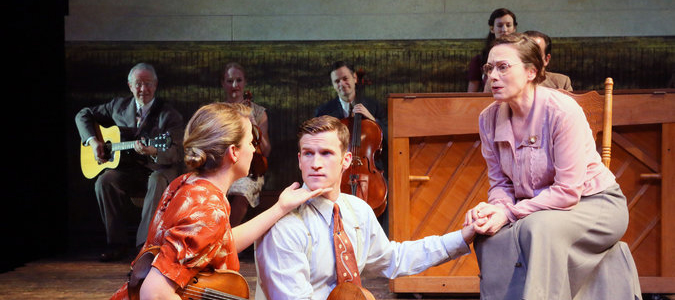


Allegro Review
The clustered chorus lockstep. The intense, face-forward performing style. The full cast with instruments in tow, acting as their own orchestra. You got it: a favorite old musical has been John Doyle-ized. Allegro—now playing at Classic Stage Company through Dec. 14—is the latest piece to feature director Doyle’s deconstructive, chilly approach. A 1947 Rodgers and Hammerstein flop that represented an adventurous departure in tone for the prolific duo, it seems an apt match since the composition is literally clinical—depicting 35 years in the life of a small-town, Depression-era doctor named Joseph Taylor Jr. (the appealing Claybourne Elder), who contemplates whether or not to open a swanky private practice in the big city. Doyle’s stripped-bare, outside-the-box directorial style has paid many dividends in his past dalliances with musical revivals, notably Sweeney Todd and Company, perhaps because Stephen Sondheim’s layered scores already flirt with duality for its leading men, even when one of them happens to be a murderous psychopath. (Ironically enough, Sondheim was a PA for Mr. Hammerstein on the original Allegro.) However, when applied to something so straightforward, Doyle’s vision feels more artificial because the work itself doesn’t have the same dark substructures for these concepts to latch onto. Rodgers and Hammerstein’s contemplative curio was conceived very much with its 1940s era in mind—imagine a showtune-laden Thornton Wilder play and you’d kind of be there. So the plastered smiles and deadpan line readings give off a waxworks vibe here that undercuts the sincerity of its original creators.













